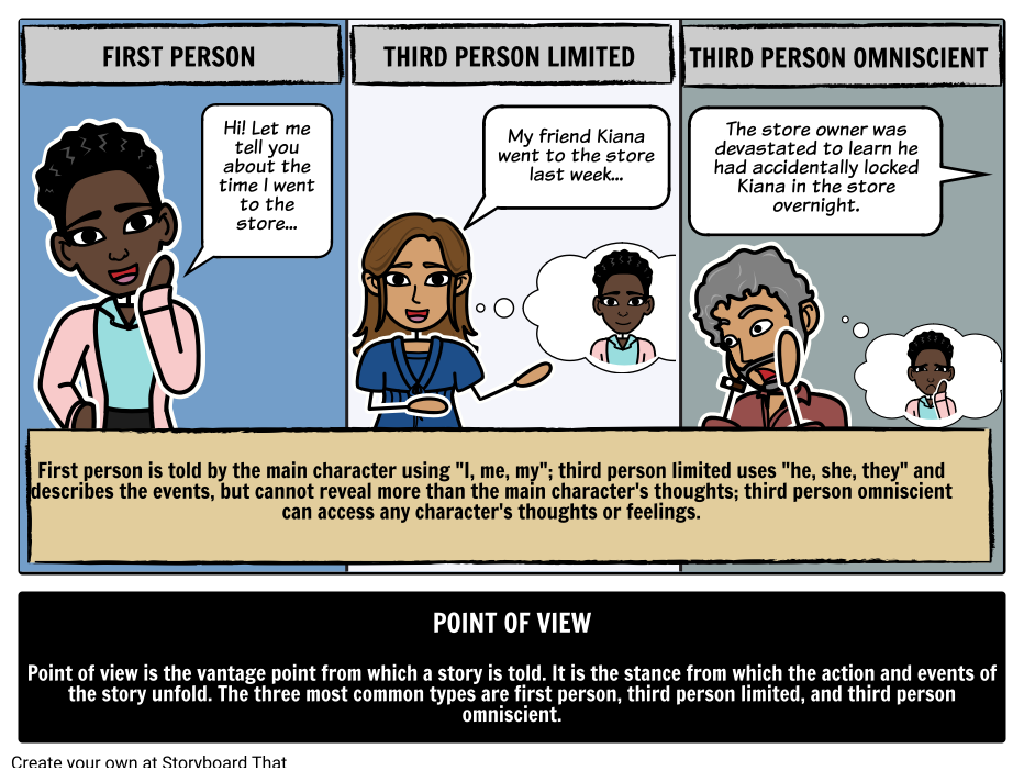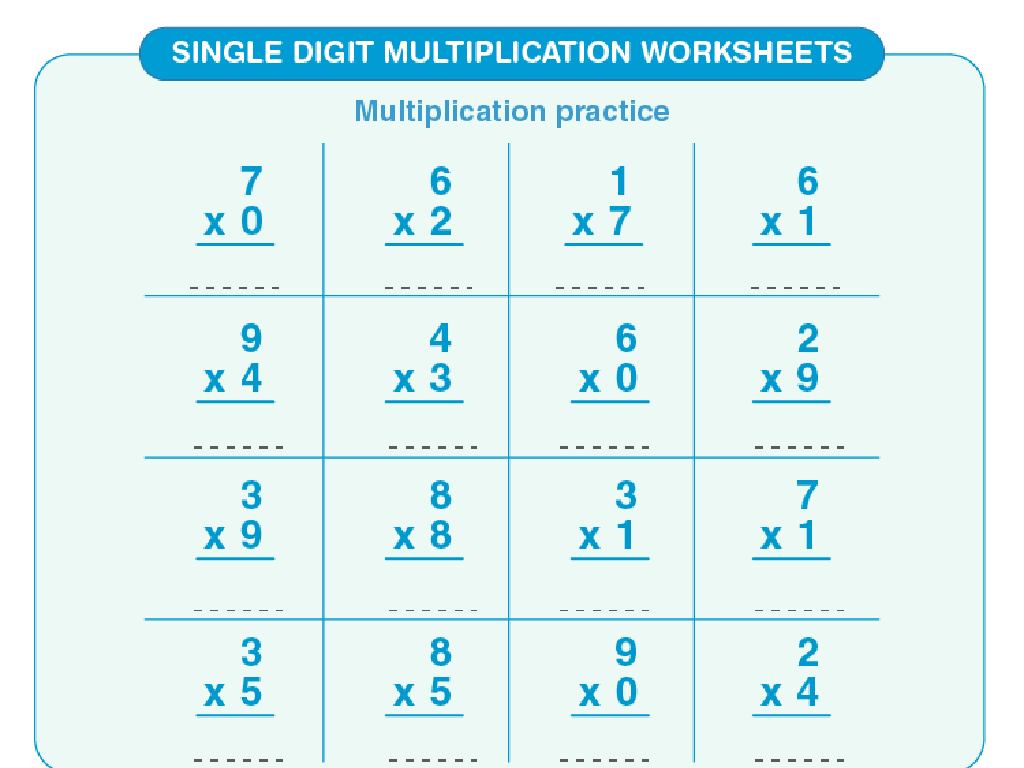Welcome To Personal Finance
Subject: Life skills
Grade: High school
Topic: Personal Finance
Please LOG IN to download the presentation. Access is available to registered users only.
View More Content
Welcome to Personal Finance
– Importance of money management
– Budgeting: Plan your spending
– Track income and expenses to avoid debt
– Saving: Prepare for the future
– Set aside money for emergencies and goals
– Investing: Grow your wealth
– Use stocks, bonds, or funds to increase savings
|
This slide introduces students to the fundamental concepts of personal finance, emphasizing the importance of effective money management for long-term financial stability. Budgeting is the first step, teaching students to plan and track their spending to prevent debt. Saving is crucial for financial security, covering unexpected expenses and achieving financial goals. Investing is about making money work for the student, using various financial instruments to build wealth over time. The slide sets the stage for a deeper dive into each topic, where students will learn practical strategies for managing their finances. Encourage students to think about their own spending habits and how they might apply these concepts to their lives.
Introduction to Personal Finance
– Defining Personal Finance
– Management of money and financial decisions for an individual or family
– Importance for your future
– Financial literacy can lead to a secure future and less stress
– Key Areas: Earning, Spending
– Earning: Ways to generate income. Spending: Allocating funds for necessities and wants
– Saving, Investing, Protecting
– Saving: Setting aside money for future use. Investing: Growing wealth. Protecting: Insuring assets
|
This slide introduces students to the concept of personal finance, which encompasses all aspects of managing one’s money, including earning, spending, saving, investing, and protecting one’s assets. It’s crucial for students to understand that personal finance is not just about budgeting but making informed financial decisions that will impact their future stability and security. Emphasize the importance of financial literacy as a life skill that can help them achieve their long-term goals and prepare for unexpected events. Encourage them to think about their own financial habits and how they might apply these areas of personal finance in their daily lives.
Budgeting Basics
– Understanding the concept of a budget
– A budget is a plan for spending and saving money.
– Key steps to crafting a simple budget
– List income sources, track expenses, set savings goals, adjust as needed.
– High school student budget example
– Example: Income from part-time job, expenses on books, savings for college.
– The significance of budgeting
|
This slide introduces students to the fundamental concept of budgeting, an essential life skill for managing personal finances. A budget is a financial plan that helps individuals track their income and expenses, ensuring they live within their means and save for future goals. The process of creating a budget involves listing all sources of income, tracking monthly expenses, setting realistic savings goals, and making adjustments as necessary to avoid overspending. To make the concept relatable, provide an example of a monthly budget for a high school student, including typical income from a part-time job and common expenses such as books, food, and entertainment. Emphasize the importance of budgeting as a tool for financial responsibility and long-term planning.
The Power of Saving
– Saving vs. Spending
– Saving is setting money aside for future use; spending is using money now.
– Starting to Save: Tips
– Set clear goals, create a budget, and prioritize needs over wants.
– Strategies for Saving
– Automate savings, track expenses, and cut unnecessary costs.
– Compound Interest Benefits
– Interest on interest over time grows your savings significantly.
|
This slide aims to educate high school students on the fundamental concepts of personal finance, particularly the importance of saving. It distinguishes between saving and spending, emphasizing the long-term benefits of saving money. The slide provides actionable tips and strategies to help students start saving, such as setting financial goals, budgeting, and understanding needs versus wants. Additionally, it introduces the concept of compound interest, explaining how it can exponentially increase savings over time. The goal is to instill a mindset of financial responsibility and the foresight to plan for the future. Encourage students to think of saving as a form of self-investment for their financial security.
Introduction to Investing
– Investing vs. Saving explained
– Investing involves purchasing assets for future gains; saving is putting money aside for future use.
– Overview of investment types
– Stocks represent company ownership, bonds are loans to entities, and mutual funds are pooled investment funds.
– Understanding Risk vs. Reward
– Higher potential returns often come with higher risks.
– Strategies for smart investing
|
This slide introduces students to the concept of investing as part of personal finance education. It’s crucial to differentiate between investing and saving right from the start, emphasizing that investing is about growing wealth over time, while saving is about setting money aside for future use. The slide also covers the basic types of investments, such as stocks, bonds, and mutual funds, each with its own level of risk and potential for reward. Discuss the concept of risk versus reward, explaining that investments with the potential for higher returns may carry more risk. Encourage students to think critically about their personal risk tolerance and investment goals. The slide sets the foundation for further discussions on investment strategies and how to approach financial planning with a balanced perspective.
Understanding Credit in Personal Finance
– Defining credit and its function
– Credit is borrowed money you can use to purchase things, promising to pay back later.
– Significance of a good credit score
– A high credit score can mean better loan terms and lower interest rates.
– Tips for responsible credit use
– Only borrow what you can repay, pay bills on time, and keep debt low.
– Impact of credit on financial health
– Responsible credit use can lead to a stable financial future.
|
This slide introduces students to the concept of credit, an essential component of personal finance. Credit is essentially trust granted to a person for the provision of resources with a promise of repayment in the future. A good credit score, determined by how well one manages credit and debt, is crucial as it affects the ability to borrow money and the terms of borrowing. Students should learn the importance of using credit wisely, which includes making payments on time, not overextending themselves, and understanding the terms of credit agreements. Emphasize that responsible credit use is a stepping stone to achieving financial stability and reaching long-term financial goals.
Avoiding Debt Traps
– Recognize common debt traps
– Credit cards, payday loans, and no-interest loans can be enticing but dangerous.
– Understand debt’s impact
– Debt can lead to stress, limit financial freedom, and affect credit scores.
– Strategies to pay off debt
– Use methods like the snowball or avalanche technique to tackle debt.
– Building healthy financial habits
– Create a budget, save for emergencies, and educate yourself on financial literacy.
|
This slide aims to educate students on the importance of avoiding debt traps, which are situations that can exacerbate financial burdens. Students should learn to identify common debt traps such as high-interest credit cards and loans that seem too good to be true. Discuss the long-term impact of debt on personal finance, including reduced financial security and potential damage to credit scores. Introduce practical strategies for paying off debt, such as focusing on high-interest debts first or paying off smaller debts for psychological wins. Emphasize the importance of developing healthy financial habits early on, like budgeting and saving for unexpected expenses, to prevent falling into debt. Encourage students to seek out additional resources and continue their financial education beyond the classroom.
Class Activity: Budgeting Workshop
– Draft your personal monthly budget
– Use the provided budget template
– Template includes categories like income, savings, expenses
– Reflect on your budgeting choices
– Consider needs vs. wants, and plan for unexpected costs
– Share and discuss with the class
– Learn budgeting strategies from peers
|
This interactive class activity is designed to introduce students to the concept of personal budgeting. Provide each student with a budget template that includes sections for income, savings, and various expenses. Guide them to consider their personal financial goals, differentiate between essential and non-essential expenses, and emphasize the importance of emergency funds. After completing their budgets, students will engage in a group discussion to share their budgeting strategies and learn from each other’s approaches. This activity will help students understand the value of money management and prepare them for real-life financial planning. Possible activities include budgeting for a hypothetical trip, managing a monthly allowance, or planning expenses for a college student. Encourage creativity and realistic scenarios to make the exercise more engaging.





